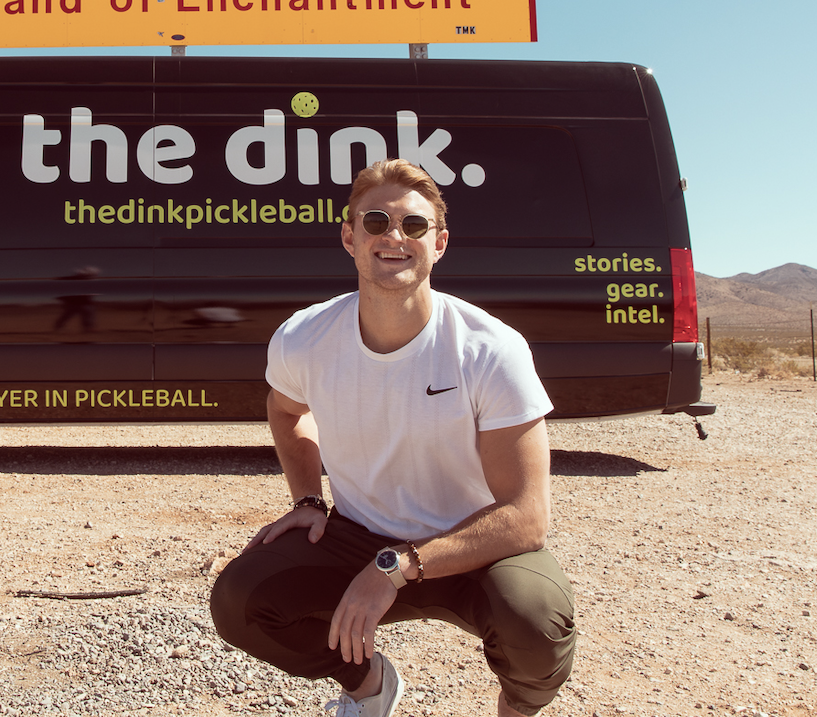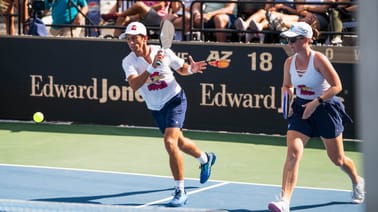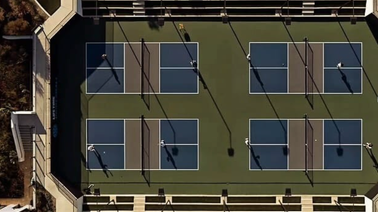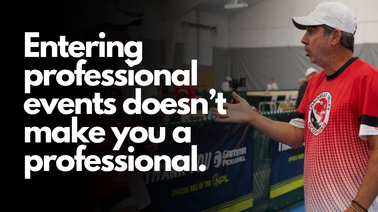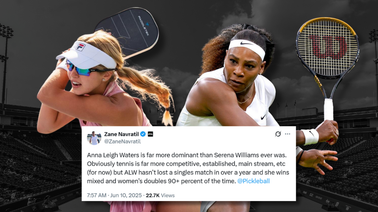
You've probably heard how pickleball is too noisy to be anywhere near peoples' homes.
From the infamous segment on HBO's Real Sports last year, to the countless news headlines concerning the closure of local courts, this issue is constantly plastered all over the news cycle.
But does public discourse over pickleball noise get it all wrong?
They all have a similar plotline. It's either:
Town receives high demand for more pickleball courts. Town picks a location. Town begins court construction. Protests about its proximity to homes or interruption of park space ensue.
OR:
Town built the courts already. Town receives lawsuit threats from noise-affected neighbors.
In either case, the story tends to focus on "noisy pickleball" as the central problem. But the real common denominator? Poor municipal planning.
For most communities, there's typically more than one option for pickleball court placement. So why does this decision-making tend to upset so many residents?

Where planning went wrong
Alex Morrison, Director of Planning and Public Spaces at Macon-Bibb County Consolidated Government, says that pickleball courts are often placed in existing tennis courts or parks.
"So it is more of an issue of resource allocation than planning," Morrison says.
"I doubt that planning departments are ever truly consulted in these circumstances and rather are internal to recreation departments where issues such as noise aren’t considered."
In other words: the location is picked by stakeholders before any noise research or other due diligence can be conducted.
"In my experience, noise is not a top level concern because of the demand."
The decibel misunderstanding
In fairness, municipal planners have been under lots of pressure from their constituents as pickleball's player count reached record levels over the last few years.
But very few stakeholders have the resources needed to make informed court placement decisions.
"IF there were enough time to do full diligence and IF there were already courts at the location, noise could be measured prior," Morrison explains.
"But the way that level of noise is usually measured is through decibel levels. In most cases, the noise of pickleball would likely be far quieter than regular street traffic, music, or other uses. The issue tends to come more from the tone or tempo, which can’t be measured easily."
In The Dink's research into the issue, we've come across various ways noise experts have attempted to define how much pickleball pop is too much.
For example: Denver, Colorado's noise ordinance allows residential levels to reach 55 decibels from 7 a.m. until 10 pm and 50 decibels all other times. Last year, the city found decibel levels reaching 70 or higher at homes closest to the courts.
However, other factors may carry sound further, so the decibel number isn't always the most faithful representation of potential impact. Many residents who live near highways are able to tune out the noise successfully – it's the type of noise that pickleball's neighbors find the most issue with.
"Once you become a pickleball player, the noise becomes far more euphonious. It’s a very welcoming sport that is still relatively young. These issues will change, technology may assist, but as the adage goes, beauty is in the ear of the listener." - Alex Morrison
Meanwhile, the lack of appropriate zoning in municipal decision-making has taken its toll.
Pushback on proposed pickleball courts is increasing nationwide following the flood of negative press. But Morrison says the best way to abate complaints over noise is for more people to play pickleball.
"As larger facilities are built and more data exists on the issues (which wasn’t available even 2 years ago), noise mitigation measures will be added and the trend for indoor facilities or private facilities may pick up steam that will defang some criticism.
Generally, any space that is good for an active park is appropriate for pickleball. Those particularly concerned with noise should seek areas that are mixed-use commercial or light industrial.
If the courts are public, zoning is not a true consideration legally speaking as governments are exempt, but they would be apt to place courts in existing rec facilities to keep product cost and time to market down.
Lessons learned from the cities with the most pickleball courts
Earlier this year, we learned which US cities contain the most pickleball courts per capita.
Boise Parks and Recreation first added pickleball lines to tennis courts at Hobble Creek Park in 2012. Using a set of established siting criteria, they identified underutilized tennis courts to convert to pickleball.
City officials advise other municipalities to involve neighbors early on in the siting process to foster a respectful relationship once pickleball courts are placed.
Seattle placed their first dedicated court in 2013. Their officials suggest staying in communication with local pickleball associations.
"Their advocacy has helped tell the story of why this sport is valuable and growing in popularity. They also have valuable input on where to place courts and how to pilot policies to support this sport," a Seattle official told us.
"And while the variety of opposing opinions on pickleball expansion can be intimidating, these are worthwhile conversations that lead to changes that can benefit our community overall."
Takeaways
All of the flak pickleball caught from noise-infuriated neighbors over the last few years has even resulted in the sport's own governing body taking action.
USA Pickleball released its Quiet Category standards for products this year. The first entry: OWL Pickleball, promising to change the sound of the game with “quiet” paddles.
Meanwhile, we’ve heard from pros that sound plays a significant role in their split-second decision-making on the court.
So, do we really need to change the inherent properties of the game? Or can’t we simply find better places to put pickleball in the first place?


